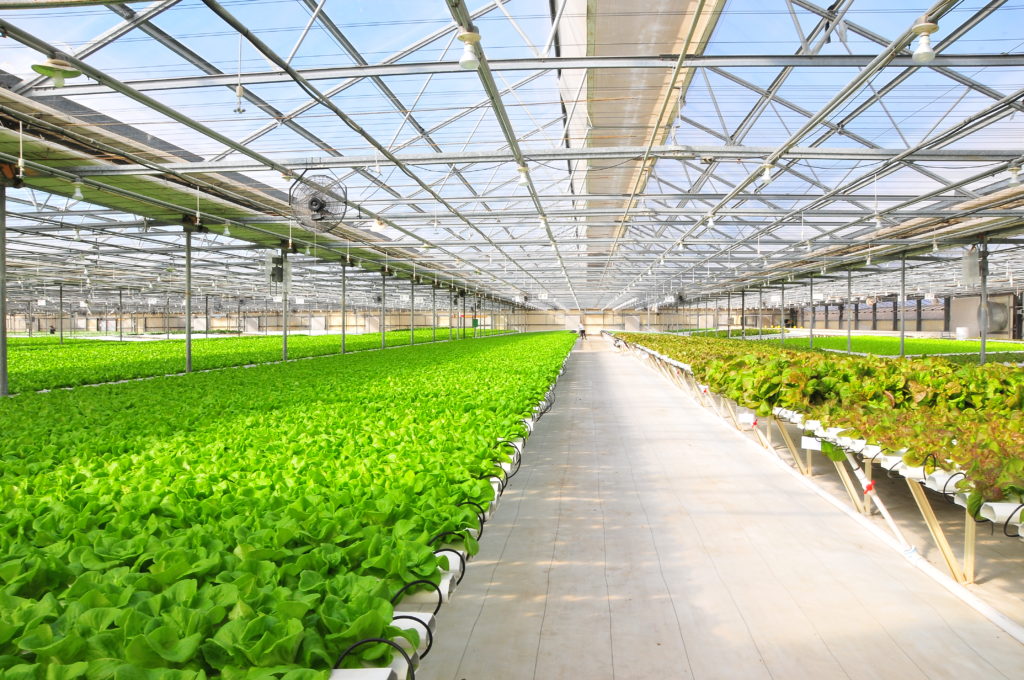
Feb 19, 2018Hydroponics, aquaponics, aeroponics OK for organic with latest USDA clarification
Hydroponics, aquaponics and aeroponics growers can earn organic certification, according to a recent clarification from the USDA.
The United States Department of Agriculture’s Agricultural Marketing Service (AMS) on January 25, 2018, clarified some longstanding issues for the National Organics Program, announcing that such operations allowed under USDA organic regulations and always have been.
The announcement follows a recommendation from the National Organic Standards Board (NOSB). “The NOSB has recommended prohibiting aeroponic systems in organic production,” AMS added in its January announcement. “USDA will consider this recommendation; aeroponics remains allowed during this review.”
All three techniques involve growing crops without soil, also called hydroculture. Hydroponics involves growing plants with mineral nutrients in a water solvent, while aeroponics involves growing crops in a misting environment. Aquaponics involves growing crops in tandem with farmed fish that supply nutrients for plants. Hydroponics and aeroponics are used by large-scale greenhouse growers and urban vertical farmers.
A divided house
Organics growers have been divided on whether soilless cultivation is good for the national organic brand, and a debate has raged for eight years while the NOSB and USDA officials gathered information, conducted listening tours and heard testimony. The information gathering most recently included the NOSB’s October 24, 2017, meeting.
For eight years, laws were in place, but different parts of the industry interpreted the laws differently, and the USDA didn’t rush to clarify the issue.
Younger hydroponics growers like Pierre Sleiman have spent their whole careers hearing and participating in the back-and-forth discussions. He’s CEO of Go Green Agriculture, a company he founded in 2009 as a college student. Go Green grows produce inside high-tech greenhouses near San Diego, California.
“The NOSB in 2010 had come out with a negative recommendation to hydroponics, which the USDA did not adopt; they felt they needed more information,” Sleiman said. “And they assembled the hydroponics task force, which, I was one of the members of, that put together a large body of information for the USDA to evaluate. It’s been about two years since we did that. And then the NOSB quite recently took that information and came to the USDA with a recommendation that hydroponics should continue to be organic, and now the USDA has officially come out and said that is true.”

The case for soilless
Sleiman has gotten involved in the discussions over the years. In 2013, his company hosted then-Secretary of Agriculture Tom Vilsack for a roundtable discussion with other organic producers; Sleiman said it was the first time a secretary of agriculture visited an organic hydroponics grow operation. In 2014, Sleiman was named an agriculture “Champion of Change” by the White House, which gave him the opportunity to talk publicly about the potential of hydroponics growing.
“(The USDA clarification) is a big deal specifically because a lot of people in the industry were afraid which way it was going to land, and for that reason, there was very little investment being put into it,” he said. “Now people can invest with confidence.”
Sleiman added that consumers will benefit from more growers going organic and prices being reduced.
“In the absence of this, organics would have become very limited,” he said.
‘Far from settled’
On the other hand, some growers feel that the organic label should be limited to soil-based growers, and opening the program to hydroponics growers isn’t appropriate.
Among those opposed to non-organic cultivation was NOSB member Francis Thicke, an organic dairy farmer from Iowa.
“Perhaps we shouldn’t be surprised to find that big business is taking over the USDA organic program because the influence of money is corroding all levels of our government,” Thicke said at the October 24, 2017, meeting, according to a transcript. “At this point, I can see only one way to bring the organic label back in line with the original vision of organic farmers and consumers. We need an add-on organic label for organic farmers who are willing to meet the expectations of discerning consumers who are demanding real organic food.”
In a January 31 statement, the Organic Farmers Association (OFA) called the USDA’s recent clarification of the soilless issue “revisionist history, and an incorrect interpretation of organic law.” Thicke, who was finishing up his term on the NOSB, was named as the OFA’s policy committee chair, and was quoted as saying the soilless organic issue was “far from settled.”
OFA members also argued the USDA’s notice didn’t reference rules in the National Organic Program (NOP) or the Organic Foods Production Act (OFPA) of 1990.
“The (USDA) notice contained no OFPA or NOP rule citations to justify the novel position being taken by USDA,” said Jim Riddle, OFA steering committee chair and former NOSB member. “Further, the notice contained no guidance to certifying agencies on how to certify operations that do not comply with most NOP requirements.”
Competing visions
Sleiman — who said the USDA’s statement is “completely final” — sees the no-soil growers as having almost a philosophical idea of what organic growing is, and how it relates to the overall environment. His own idea of organic is literal.
“The word, ‘organic,’ literally means that the inputs to the crop are not synthetic, not manmade, etc.,” he said. “And anyway you slice it and dice it, anybody who grows organically, … those who agree or disagree with [the clarification] are all using the same inputs.”
He added that soil growers and hydroponics growers shouldn’t be arguing.
“It’s not that there’s any one solution,” Sleiman said. “I don’t think anybody in the industry should feel threatened by this new technology. It’s just expanding our toolset.”
— Stephen Kloosterman, Assistant Editor
Above: A hydroponic greenhouse of Go Green near San Diego, California.
















